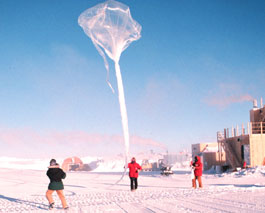Ozone Hole

The ozone layer filters ultraviolet (UV) rays from sunlight and prevents too many of them from reaching the Earth, which would be harmful to the environment and to human health. In the early 1970s scientists began worrying about ozone layer depletion. Researchers postulated that the nitrogen exhaust of high-altitude jet aircraft [such as supersonic transport (SST) aircraft], and chlorofluorocarbons (CFCs) would damage the ozone layer (when CFCs break down they release chlorine.) As a result of these suspicions, the U.S and some other countries ceased building SST aircraft and banned the use of CFCs in aerosols. Further action, however, was delayed until after a May 1985 report from scientists at the British Antarctic Survey. They reported a progressive deterioration in the Antarctic ozone layer the last several years, so great as to amount to an “ozone hole.” Indeed, the scale of reported ozone loss was so large that the scientists suspected instrument error and had ordered replacement instruments to confirm their initial findings before publishing their results.
The global scientific community moved quickly both to confirm the existence of the Antarctic ozone hole and to determine its cause. Over the next few years hundreds of scientists, engineers, and technicians traveled to Antarctica with a wide variety of scientific instruments. One of the most notable of these instruments is the ozonesonde, a weather balloon capable of detecting ozone and of rising 35,000 meters (115,000 feet) before bursting.
At the core of an ozonesonde is an electrochemical concentration cell (ECC) containing a diluted solution of potassium iodide. This reacts with ozone to produce a weak electrical current proportionate to the amount of ozone present. The strength of the current modulated a radio signal which was in turn transmitted back to the ground. The scientists also used ground-based laser-radar (Ladar) and microwave instruments in addition to research airplanes that flew high into the Antarctic sky and satellite instrumentation to study the ozone hole.
Of the satellites, the most useful was NASA’s Total Ozone Mapping Spectrometer (TOMS), which provided worldwide daily snapshots of total column ozone thickness. The small-scale data from below provided by the ozonesondes and other instruments, and the large-scale mapping ability of the satellites above, together gave the scientists the means to make a conclusive analysis of the ozone hole: It existed, it was caused by CFCs, and it was growing at an alarming rate.
Action quickly followed the publication of these new studies. In 1987 the Montreal Protocol committed most of the industrialized nations to freezing the use of halocarbons (a broad class of chemicals including CFCs, all at least mildly harmful to the ozone layer) at 1986 levels by mid-1989, and to cut CFC production and use by half by 1999. Further research in the intervening years revealed that the Protocol was insufficient: the ozone layer was also growing thin in the Arctic, and ozone depletion was detected even in the temperate latitudes. In June 1990, the Montreal Protocol was revised: the treaty now called for a total phaseout of CFCs and Halons by the year 2000 (except for a few essential uses of Halons), and phasing out of other ozone-destroying chlorine compounds by 2005.
